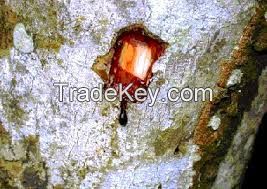

سعر فوب
أحصل على آخر سعر( Negotiable )
|1 Kilogram Minimum Order
بلد:
Peru
نموذج رقم:
-
سعر فوب:
( Negotiable ) أحصل على آخر سعر
الموقع:
Iquitos Peru
سعر الحد الأدنى للطلب:
-
الحد الأدني للطلب:
1 Kilogram
تفاصيل التغليف:
-
موعد التسليم:
-
القدرة على التوريد:
1000
نوع الدفع:
-
مجموعة المنتج :
-
Peru
الشخص الذي يمكن الاتصال به Mr. Paul
Lima, Lima Province
Sangre de grado is a medium-sized to large tree that
grows from ***0 m high in the upper Amazon region of Peru, Ecuador,
and Colombia. Although tall, the trunk is usually less than *0 cm
in diameter and is covered by smooth, mottled bark. It has large,
heart-shaped, bright-green leaves and unique, greenish-white
flowers on long stalks. Its Peruvian name, sangre de
grado, means blood of the dragon (in Spanish). In
Ecuador, its named sangre de drago (which means dragons blood as
well). When the trunk of the tree is cut or wounded, a dark red,
sappy resin oozes out as if the tree is bleeding—earning this local
name. The genus Croton is a large one, with **0
species of trees and shrubs distributed across the tropical and
subtropical regions of both
hemispheres. Crotons are rich in active
alkaloids, and several species are well-known medicinal plants used
as purgatives and tonics.
TRIBAL AND HERBAL MEDICINE
USES
Sangre de grado's red sap or latex (and also its bark)
has a long history of indigenous use in the rainforest and in South
America. The earliest written reference dates its use to the ***0s,
when Spanish naturalist and explorer P. Bernab Cobo found that the
curative power of the sap was widely known throughout the
indigenous tribes of Mexico, Peru, and Ecuador. For centuries, the
sap has been painted on wounds to staunch bleeding, to accelerate
healing, and to seal and protect injuries from infection. The sap
dries quickly and forms a barrier, much like a "second skin." It is
used externally by indigenous tribes and local people in Peru for
wounds, fractures, and hemorrhoids, internally for intestinal and
stomach ulcers, and as a douche for vaginal discharge. Other
indigenous uses include treating intestinal fevers and inflamed or
infected gums, in vaginal baths before and after childbirth, for
hemorrhaging after childbirth, and for skin
disorders.
Sangre de grado resin and bark are used in traditional
medicine in South America today in much the same manner as
indigenous ones. In Peruvian herbal medicine it is recommended for
hemorrhaging, as an antiseptic vaginal douche and, topically, for
healing wounds. It is also used internally for ulcers in the mouth,
throat, intestines and stomach; as an antiviral for upper
respiratory viruses, stomach viruses and HIV; internally and
externally for cancer and, topically, for skin disorders, insect
bites and stings. In Brazilian traditional medicine the sap
currently is used for wounds, hemorrhaging, diarrhea, mouth ulcers,
and as a general tonic.
PLANT CHEMICALS
Sangre de
grado resin or sap is a storehouse of phytochemicals including
proanthocyanidins (antioxidants), simple phenols, diterpenes,
phytosterols, and biologically active alkaloids and lignans
Scientists have attributed many of the biologically active
properties of the sap (especially its wound-healing capacity) to
two main "active" constituents: an alkaloid
named taspine, and a lignan
nameddimethylcedrusine.
Excerpt from Tropical Plant Database
full text
rain-tree.com/sangre.htm#.WGpHheSEClT
| بلد: | Peru |
| نموذج رقم: | - |
| سعر فوب: | ( Negotiable ) أحصل على آخر سعر |
| الموقع: | Iquitos Peru |
| سعر الحد الأدنى للطلب: | - |
| الحد الأدني للطلب: | 1 Kilogram |
| تفاصيل التغليف: | - |
| موعد التسليم: | - |
| القدرة على التوريد: | 1000 |
| نوع الدفع: | - |
| مجموعة المنتج : | - |